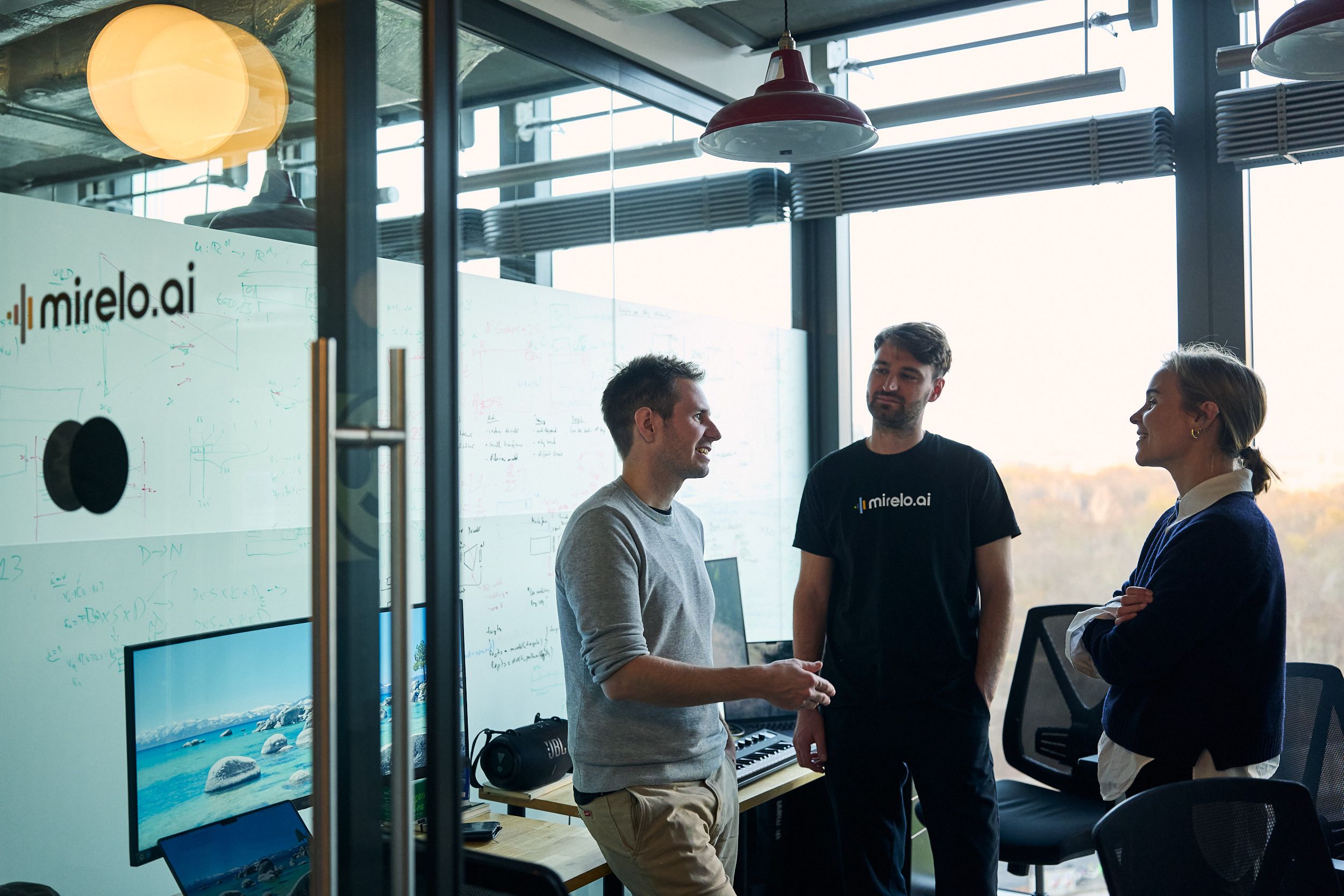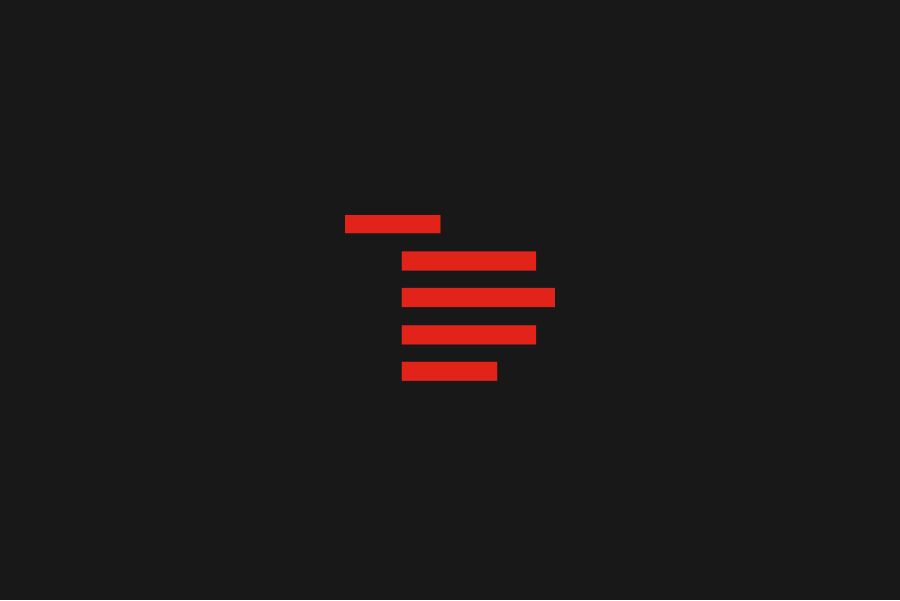Index Creator Summit: Why is everyone talking about creators?
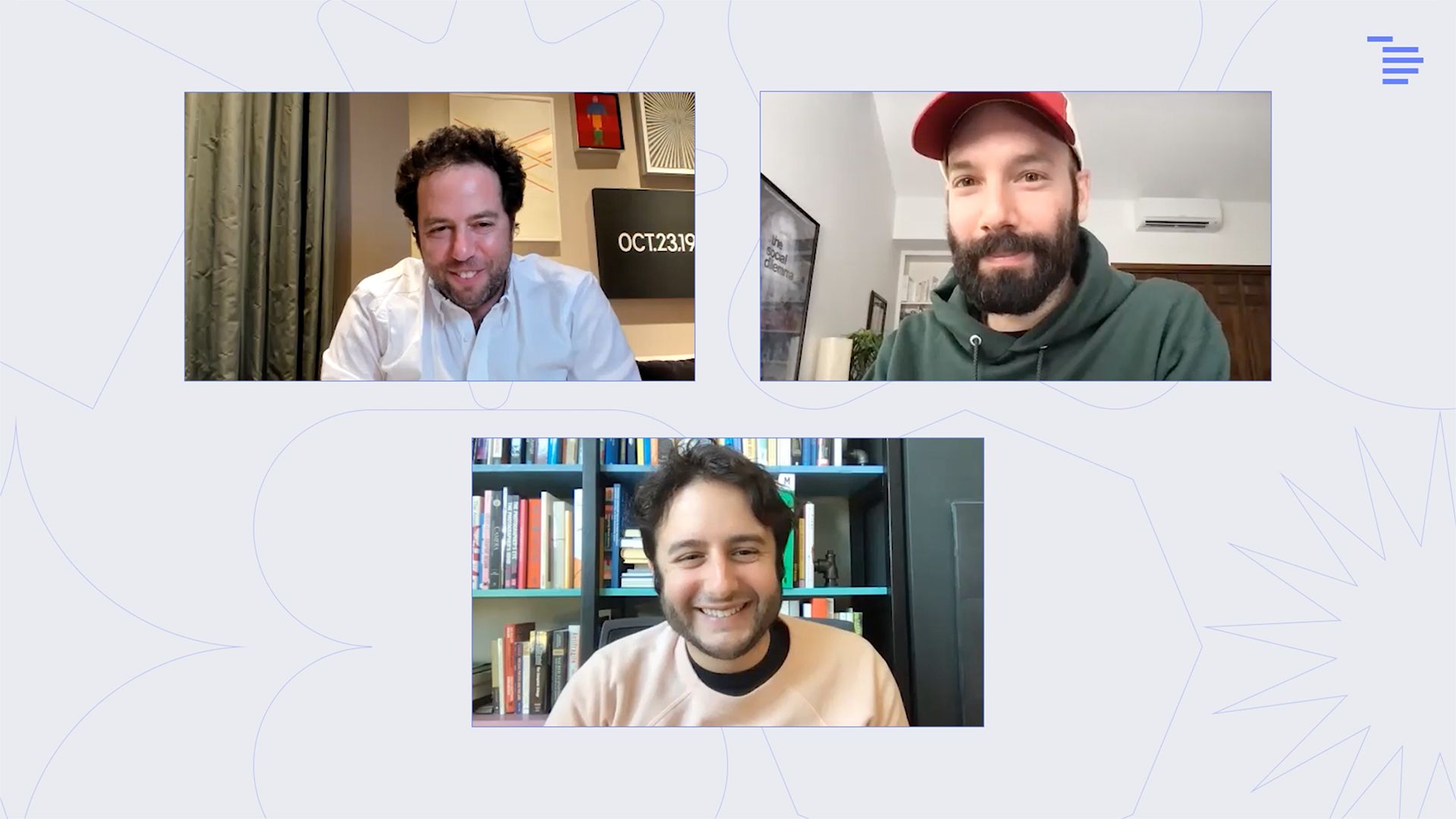
From the way we produce and consume culture, to how we live and work, a fresh generation of businesses is reimagining what it means to ‘create’ in today’s digital economy. We hosted the Index Creator Summit 2021 to unpack the creator phenomenon and how it cuts across social, gaming, media, crypto and commerce.
Here, Jack Conte, co-founder and CEO of Patreon and Dylan Field, co-founder and CEO of Figma speak with Index Partner, Danny Rimer.
From podcasters to writers, YouTubers to rap artists, the forces of self-expression are in the midst of a generational seachange – with 75% of people in Gen Z saying they want to be creators, not just consumers. But what makes this creative class unique in the arc of human history, and how can startups support the coming digital renaissance? Hear two of the founders of today’s creator economy discuss its past, present and future: Jack Conte, co-founder and CEO of Patreon, and Dylan Field, co-founder and CEO of Figma.
"The nerds have come out of the closet. The intellectual, analytical, creative people who wrote songs on ukulele are all over the web now, and they're smart as hell, and they're making stuff and building businesses." - Jack Conte, CEO and co-founder of Patreon
Moderated by Index partner Danny Rimer, an early investor in both companies, Conte and Field begin by debating the core attributes of creators. They move to the importance of community and monetisation, and the possibilities of NFTs – non-fungible tokens based on cryptocurrency blockchains, which creators are now using to sell digital artworks such as memes, videos, image files and songs. They discuss the nascent and as-yet-unimagined business models that will support media and arts in the 21st century, allowing creatives and their fans to capture more value than advertisers and intermediaries such as record companies and social media networks. Finally they turn to the size and influence of global ‘niches’, the consequences of democratising the creator mindset, and the future of global celebrity.
Prefer audio? Listen to the Creator Summit on Spotify, Apple Podcast or right below.
TRANSCRIPT
Danny Rimer:
It’s an honour to host a panel with two of my absolute favourite entrepreneurs. Jack, back in 2013 when we first met, you probably were the first person I knew who wasn't talking about makers, but about creators. I’d love to hear what you thought creators meant then, and how you think of creators today.
Jack Conte:
It’s changed a lot over time and there's no canonical definition. Everybody's using the word ‘creators’ now but nobody really agrees what the attributes are. I think that’s why we're seeing all these market sizings come out, with some people saying there's 50 million creators, and some people say there's 200 million. It’s because we're talking about different people.
But back then, I saw that I was a creator, am a creator. Even now I'm making a hundred music videos per year and putting them online. And back then I was putting out videos on YouTube and reaching an audience. I realised there were a lot of people just like me. They made amazing digital artwork, whether it was video, audio, imagery, whatever it is, and they were building a following doing it. What I realised was there's a whole category of people whom nobody's really building for, and they have a lot of problems. It's very hard to be an artist in the day and age of the internet.
Now, eight years later, it's pretty clear what connects those people. The first is that the relationship is one to many with the audience; it's not one to one. It's primarily one to many relationships between the creator and their fans. The second thing is that the relationship is asymmetric. It's outside of the friends and family graph; it's the follower graph. And the interactions are parasocial by nature. They’re not real friendships – it's ‘one to many’ friendships and intimacy, existing in this kind of parasocial space. The third key attribute is to use media as a form of communication, audio, texts, video, imagery, etc. And then the last thing is that they use the internet as the channel for that communication.
So those are the things that we mean when we talk about creators, but a lot of those things are debatable. Do you need a following to be a creator? Adobe would say no. They have a lot of creators who don't have followings. Do you need to be internet based in order to be a creator? I think Bjork would say, nope, you can do concerts and reach your fans through venues and live performance. And then there's people who would say you don't even need to use media to communicate. So all these sorts of attributes are up for debate, but that's how Patreon thinks about it, and I think it's how a lot more people are starting to think about it.
Danny Rimer:
Dylan, when we first met, I remember you and Evan [Wallace, your co-founder] had two key components for Figma. One was to democratise the world of design and design making, and the other one was to have a community of designers. How do you view what's happened with creators compared to the original vision of Figma?
Dylan Field:
Well, I grew up in Sonoma County, pretty close to where Jack spent a lot of time as well, at the earliest Patreon. And I got to work at O'Reilly Media, and they were the ones that really popularised the term ‘maker’ actually, through Maker Magazine. I've always thought about just how important it is to be able to express yourself creatively. And whether you call it a maker, a creative, or whatever, to me that's an act that can be done solo. There's no audience needed. My wife made this bookshelf behind me. You're seeing it because we're on a Zoom call, but it wasn't made to be seen. It was made for our personal enjoyment between the two of us. And I think she's creative and a maker.
I think that a lot of people make things in Figma all the time, but they never show anyone. And I have respect for them as well. We can argue about the term creator. I think it's harder to argue about who the participants are in the creative economy, and I think those are people that, like Jack said, are the ones that are putting content out there, building an audience, and really connecting with their fans online. It’s really exciting just to see the evolution of the space and how much is happening.
Jack Conte:
I think that's a really great point, that the term creator economy is precedented on value creation, which assumes consumption and an audience. So in order for there to be an economy around something, there must be consumption. I agree with you: everybody can be a creator and your creations don't have to be intended for an audience. But when it comes to the creator economy, now we're talking about people who are in value generation mode, and looking for value capture on top of that.
Danny Rimer:
I mean, I guess it depends on the cost of the particular item, the size of the community, how many followers…
Dylan Field:
I think part of the job of someone in the creator economy is to grow the community. So it's as much a community management job, as well as the job of literally being an artist. Look at Jack. Even before Patreon he built this amazing community around his music and his YouTube channel. And I think that when you see the people that are most successful in the creator economy, it’s so, so community based as well.
Jack Conte:
Danny, you arguably saw this before any of us, before most VCs who are now shouting creators from the rooftops. You were in SoundCloud, you were in Etsy, you were seeing a whole different economy of creators before this first wave of creator economy, capital C, capital E.
Dylan Field:
Not only did you back Jack’s company without blinking an eye, you backed ours. I remember I walked in and I had no idea exactly all the pieces fit together, and you're like, "Dylan, this is going to be huge." And I'm like, "We haven't figured out what we're doing yet exactly." You saw 10 years out what it was going to be.
Danny Rimer:
That’s very kind of you folks. The aspect I saw was that all of these niches when exposed on the internet are absolutely enormous. All of a sudden affinity groups found their kin, and were so excited about being able to connect and to support it. I remember that one aspect that blew me away in the early days of Etsy is that 30% of the makers were actually buying things on Etsy. So there’s this self-fulfilling desire to support this new social class.
Let me connect something. Jack, you've talked about the second Renaissance. And I remember talking to Dylan about the CryptoPunk [a digital artwork] that he sold, and he was trying to convince me that it was his Mona Lisa. Joking aside, I would love to talk about how you feel NFTs [non-fungible tokens] and crypto-native components are part of this creator class, and how you're thinking about enabling that with Figma.
Dylan Field:
If we zoom out, what's important to both Jack and I is getting creators paid. And why is that important? For Figma, our mission is to make design accessible to all. We're trying to make it so that more people are able to access design and creativity. One way you can do that is through great tools, really easy to use, not intimidating to people and easy to access across all platforms. Another way to do that is to make sure creators actually have the economic means they need to go make more content and their dreams and their art forms. I think NFTs are truly exciting because they start to enable that for some people, just like Patreon enables it. We're seeing so many different ways that people are now using NFTs to monetize this work.
There's something really special in Ethereum right now in particular, it really has almost a meme economy. Crypto in general has this. Whether it's Dogecoin or outside of crypto with things like GameStop, right? You can dismiss these as fads and go, "Oh, whatever, people are being irrational with their money and they’re gambling." Or you can say, "Wait a second, people are trading on mimetic ideas." If you think about it, that idea maybe has some currency in the art ecosystem as well, where you're really betting on what ideas are going to take off and which ideas will end up spawning new classes of behaviour and become canonical.
Then combine that with, ‘Okay, how do I actually get more of a relationship with a creator?’ If I believe that this creator is going to be really important in the history of humanity, how do I make it so that I'm able to be in their community, improve my fandom through an NFT, which might let me get more into perhaps a private discord with a creator or other top fans? These concepts start to merge together in a really interesting way, very quickly.
Jack Conte:
I completely agree. I think there are two exciting things about NFTs broadly. One, if you take the term creator economy, it's not like this is the first time art and money have intersected. This is one creator economy; there have been many more before this. For many years, the main form of creator monetization was around physical good sales with your art on it, whether it's a CD or a DVD or whatever. There is a whole supply chain, lots of infrastructure around selling physical goods. Then the internet came around and you have a lack of scarcity. You have infinite replicability, you have instantaneous connection. Physical good sales don't work in that world. The music industry tanked. Unit sales as a line on a creator's P&L evaporated. So what is the creator economy that works with the internet? What are the new business models that generate revenue for the global production of arts? The exciting thing about right now is that's largely unimagined territory. There are some good bets being placed and some exciting innovations happening. NFTs are one of those.
What’s particularly exciting about NFTs is it's a new form of value capture, where previously every interaction on the internet is essentially monetized via engagement converting to ad revenue. Then the value capture happens in an advertiser and in the market cap of the company that’s distributing the content. So all of the energy of the web is essentially being captured in Facebook and Google. But with NFTs, that value gets transferred to consumers and creators. So all that energy and sharing and enthusiasm and excitement and resale – now the value generated by those activities is going to creative people and people who are enjoying the creativity. That is a new, exciting phase of the web.
Dylan Field:
The other macro trend that cannot be overstated is the shift that we're seeing across the world from physical to digital, from people living their lives in a physical space to a digital space. It was accelerated by the pandemic – we're seeing more people just literally live online. If you live online, you actually do desire goods online too.
Some people think that NFTs and all this is just speculation. That's a huge part of it, but I don't think it's the entire part of it. Having found my corner of the internet where people are really looking to collect and hold onto some of these assets forever, I think there's a real appreciation of the creativity of some of the art. It's almost like you're building a museum with people; for some reason it's different if you are enjoying the art that someone else owns versus the art that your community owns.
Danny Rimer:
Jack, from the creators that you have on the platform today, how fluent do you think they are about this trend? Do they understand the tools at their disposal? How much is that part of the responsibility that Patreon has to bring them to this next level of the evolution of the internet?
Jack Conte:
I mean, it's a distribution. There's a portion of creators who are incredibly savvy and business-minded and architect types. And they are their own CFO and their own CEO and they're their own innovation lab and they're discovering new products that they can use to help them run their businesses. That's a whole profile of creator that we study and try to help. And there's a lot of creators who are not like that, who want to play guitar and sing and would prefer everything to be kind of easy.
It’s the forward-thinking folks who are doing NFTs and setting up new businesses and trying hundreds of new products. It's a relatively small portion, but they're there, and they're incredibly savvy and smart. The archetype of an artist now in 2021 is so different to the archetype from 1970. Like, can you imagine Jimmy Hendrix on a webcast, "Hey, guys, don't forget to like and leave a comment below." That's just a different type of person. Now the nerds have come out of the closet. The intellectual, analytical, creative people who wrote songs on ukulele are all over the web now, and they're smart as hell, and they're making stuff and building businesses. It’s a new type of creator.
Danny Rimer:
Dylan, how do you envision the users of Figma today versus when you were kicking off, and how much of this community of creators do you envision using Figma as a tool?
Dylan Field:
Figma is a general purpose tool that I know people use for NFT work and the creative economy. But there's a lot that we don't do. We don't do video. People will make 3D art in Figma, but it’s probably not the place that you’d want to do it first.
I wouldn't say, like, "Here's our NFT strategy". We're just really focused on making sure that we complete that life cycle from you have an idea, you can brainstorm an idea with your team, to design and production. But if we do that right, more digital experiences are possible in a variety of contexts – whether on the internet, on mobile phones, or in the future in the metaverse, 3D, AR, VR. Really, it’s our goal to own that life cycle, wherever it exists.
Danny Rimer:
As we're talking about this, you have both independently talked to me about this Gen Z generation, where 75% of them want to be creators rather than consumers. What happens if the world becomes all these creators – who consumes all this stuff? What happens to this new economy when most people don’t want to work for someone or consume, they want to create?
Dylan Field:
First of all, I think this is fucking awesome because, I mean, compare this to 10, 15 years ago. How many people were raising their hand saying, "I want to be a creator"? No one.
Danny Rimer:
Well, maybe Jack – but few people.
Dylan Field:
I mean, there were a few people on YouTube, but I think even they were doing it because it was pure passion.
Jack Conte:
I don't know, Dylan, I was doing it for the money. I mean, let me tell you, that's where it was at, back in 2013.
Dylan Field:
How much money were you making in 2013 off YouTube?
Jack Conte:
It was $166 a month of ad revenue.
Dylan Field:
There you go.
Jack Conte:
But we did get some good brand deals.
Dylan Field:
That's true. But I think it was mostly about the passion at that point. And now that's changed. It's actually a viable career path, and all the kids who told their parents when they wanted to grow up, I want to be an artist," or, "I want to make things." And their parents were like, "That's nice. How about something else? I want to make sure that you can eat." It's just a different world today.
I think it's wonderful that we've kind of made that bit flip from consumption to creation, or that's coming at least. Outside of Gen Z, I don't think we made a bit flip yet actually; everyone else is just getting used to it. I think that the market will figure out how many jobs we can support here. By the way, it's totally unclear what the role of AI will play here, not to use another buzzword – but no one really knows how fast AI will develop and the role of that in creating content for people.
I am so excited for a world where humans are creating content and expressing themselves, maybe with AI help. I get a little bit more worried if we're all just like, "Let's do a TikTok”, and it’s an AI bot creating deep fakes all day that are maximally tuned to make our dopamine receptors go off. That gets a little bit freaky.
Jack Conte:
The internet has afforded us the ability to reach people with the things that we make and say. And that is a very, very exciting time for humans as a species. You named it, Danny, you said it's the niche. But really, if I'm a weirdo, if I make really strange art, let's say nobody in my town likes my stuff, one in a thousand people. I play a show. Two people show up. It's weird art. Well, there's two billion people online, more, three billion people. So there's three million people on the web who would like my stuff. Even if I'm a real weirdo, and I've got a one-in-a-thousand batting average, we're talking about hundreds of millions of people who can make things and reach millions of people and build a legitimate audience and business around the idea of creation. That has never been possible in the history of humanity.
And it's possible right now. It's happening right now. That makes this a unique time for us. If we're going with buzzwords, I'll throw out future of work. Clearly this is a new category of the workforce and of value creation. I was talking to a company just yesterday who's specifically helping people build 3D galleries in which they can explore NFTs. In this world where the metaverse and the internet is eating human interaction, pretty much everything we make now could have an audience, making us creators with a following. I think we're going to see a lot more people making things and building fan bases, audiences, communities. Pretty much everything we do is becoming creation.
Danny Rimer:
One last question I wanted to ask: Dylan, you mentioned the proximity of where you grew up to where Jack spent a lot of time, and you're both building companies out of San Francisco. We're talking about some really important future global trends –how global do you think this is?
Dylan Field:
Completely global. Whatever mindset was present in the Bay Area that differentiated it as a geographic region, that mindset now lives in the internet. Regardless of where you grew up physically, you can tap into it if you so choose. And there'll be more and more content created so you're able to tap more into that zeitgeist. Already we have Twitter, but I think that's going to even explode further. We're going to see hubs, and people starting amazing companies and people creating amazing work everywhere in the world – we're already seeing that.
Whatever dial you have on a scale of one to 10, if we're at a two right now, it's going to be a 20 in a few years. It's wonderful to see people anywhere having this opportunity to be able to make money, because that really helps make their lives easier, as well.
Danny Rimer:
And Jack, I saw you nodding a lot, so I'm going to take advantage of the fact that you're happy with Dylan's answer to ask you a final question. Andy Warhol famously said that everyone has 15 minutes of fame. The fact this is a global phenomenon, the fact that niches are being appreciated – do you think that we're going to have the same magnitude of celebrities and stars that we have in the past? Do you think that there will be Katy Perrys and Leonardo da Vincis in the future? Or are we going to go very niche-ified?
Jack Conte:
I think we will still have global phenomena. Nothing's going to stop [the TV series] Stranger Things. There will be things that resonate with everyone. I hate the phrase ‘long tail’, but the difference is, yes, the peaks will be just as big at the top, but the long tail will be much taller and much fatter and wider. And lots of people will be able to reach millions, which that's the part that didn't used to be able to exist. So I don't really think it changes the contour of the distribution, if that makes sense. It just makes it more possible for anyone to engage and to participate. That is the democratising part that’s really special and unique to this world of connection that we live in right now.
Danny Rimer:
Well, folks, I'm respectful of your time, the opportunity cost of spending more time with us versus going back to work on your businesses doesn't make sense. Thank you so much for this discussion, it was super insightful, and it's fun to have you both even virtually in the same room.
Dylan Field:
Thanks for having us. And Jack, Danny, it was great to see you.
Jack Conte:
Thank you, Danny. Really appreciate it.
Danny Rimer:
Ciao, folks.
Watch the full summit and hear from all 24 speakers who discuss the creator phenomenon.
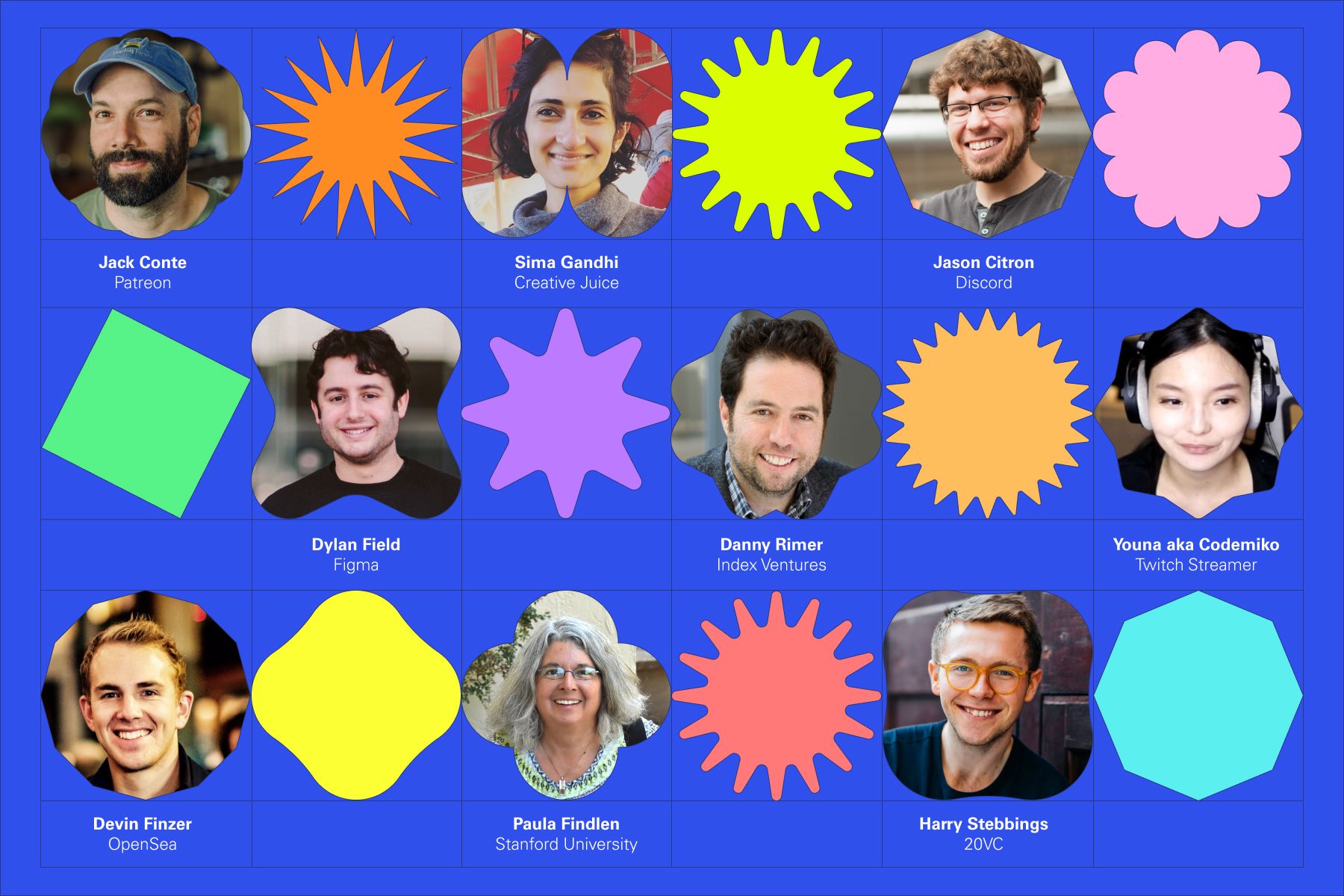
Published — Oct. 28, 2021
-
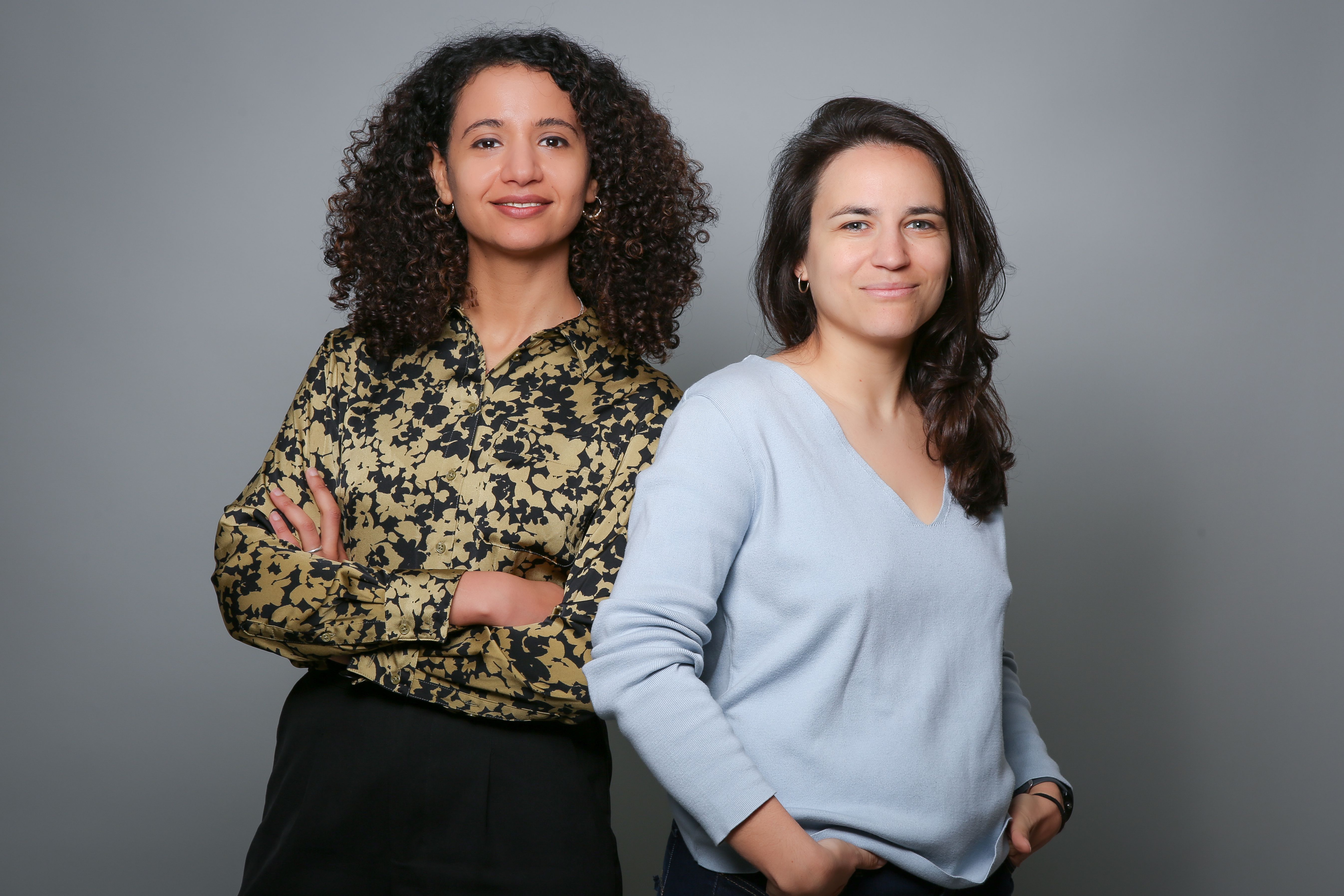
-
